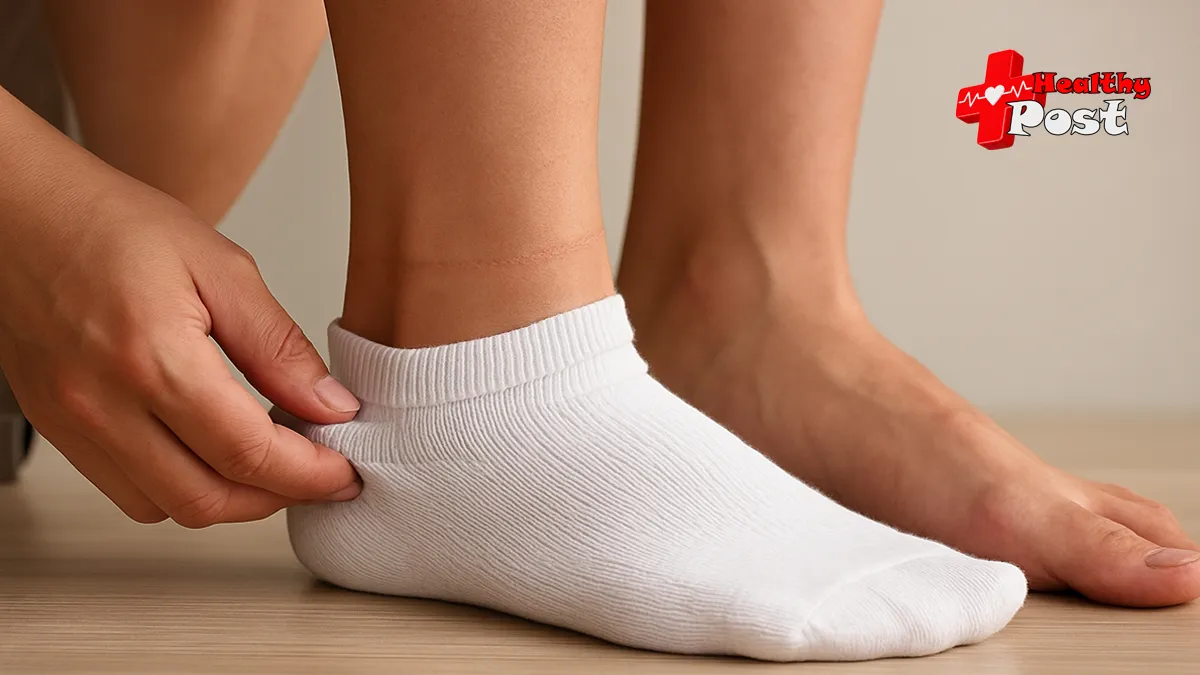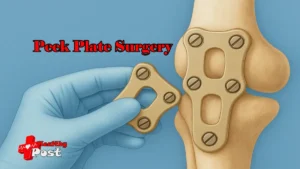
5 Surprising Facts That Answer “Are Sock Marks a Sign of Heart Disease
We’ve all noticed it — you take off your socks after a long day, and there it is: a faint line circling your ankle or calf. It’s natural to wonder: are sock marks a sign of heart disease? This question has popped up more often in recent years as people become more aware of how subtle body signals might reflect underlying health issues.
The truth is, sock marks don’t always mean something serious, but in certain situations, they can be an indicator worth paying attention to. Understanding the difference between normal compression marks from socks and swelling caused by circulation problems is important for your peace of mind and long-term health.
In this article, we’ll dive into 5 surprising facts that can help you understand whether sock marks are harmless — or whether they could be pointing toward something deeper like heart disease.
1. Sock Marks Are Usually Harmless — But Not Always
Most of the time, sock marks are just the result of your socks fitting snugly against your skin. Elastic bands are designed to stay in place, which means they press slightly into the soft tissue of your legs.
But here’s the key:
- If the marks are light and fade quickly, they’re probably nothing to worry about.
- If the marks are deep, long-lasting, and happen often, they may be linked to fluid retention (edema).
Edema happens when excess fluid builds up in the tissues. This is where the concern about heart disease comes in — because when your heart isn’t pumping blood efficiently, fluid can collect in your legs, ankles, and feet.
👉 So while sock marks alone don’t confirm heart disease, persistent swelling deserves a closer look.
2. Sock Marks Could Be a Sign of Circulation Problems
One surprising fact is that sock marks can sometimes reveal issues with blood circulation. If your veins are struggling to send blood back to the heart, fluid can start pooling in your lower legs.
Some circulation-related conditions linked with noticeable sock marks include:
- Chronic venous insufficiency (CVI): Weak valves in the veins cause swelling.
- Congestive heart failure (CHF): The heart doesn’t pump blood effectively, leading to fluid buildup.
- Kidney or liver problems: These can also affect fluid balance in the body.
To put it simply, if your socks are leaving noticeably deeper marks than usual, it might be your body’s way of saying: “Pay attention to your circulation.”
3. Lifestyle Factors Play a Big Role
Before you panic and think “are sock marks a sign of heart disease?”, it’s important to remember that lifestyle habits often explain these marks.
Here are some common everyday causes:
- Sitting or standing for long periods: Gravity naturally pulls fluid down into your legs.
- Tight or ill-fitting socks: Some socks leave marks simply because of their elastic design.
- Hot weather: Heat makes blood vessels expand, which can lead to more fluid pooling.
- High salt intake: Salt makes your body retain more water, increasing swelling.
This means that in many cases, sock marks aren’t a red flag for heart disease, but rather a reminder to adjust small habits like moving around more often, drinking enough water, and reducing excess salt.
4. Sock Marks Plus Other Symptoms Could Signal Heart Concerns
Here’s the most important fact: sock marks on their own are rarely enough to suggest heart disease. But when they come with other symptoms, that’s when you should pay attention.
Look out for these warning signs alongside sock marks:
- Shortness of breath, especially when lying down
- Unexplained fatigue or weakness
- Rapid weight gain from fluid buildup
- Swelling in the ankles, legs, or abdomen
- Persistent cough or wheezing
If you notice sock marks plus one or more of these symptoms, it’s a good idea to schedule a check-up with your doctor. Early detection makes all the difference with heart-related conditions.
5. A Simple Self-Check Can Offer Clues
If you’re still asking, “are sock marks a sign of heart disease?”, one practical step is to try a quick self-check.
Here’s what you can do at home:
- Press your finger gently into the skin near your ankle or shin.
- If the skin springs back quickly, that’s normal.
- If it leaves a noticeable dent (pitting edema) that stays for several seconds, it may suggest fluid retention.
This doesn’t automatically mean you have heart disease, but it’s a clue worth mentioning to your healthcare provider.
🧾 Visual Aid: Normal Sock Marks vs. Warning Signs
| Type of Sock Mark | What It Means | Should You Worry? |
|---|---|---|
| Light, fades quickly | Normal elastic pressure | Not a concern |
| Deep, long-lasting | Possible fluid buildup | Monitor closely |
| With swelling + other symptoms | Circulation/heart issue | See a doctor |
Practical Tips to Reduce Sock Marks and Support Heart Health
Even if sock marks turn out to be harmless, it’s never a bad idea to support your circulation and heart health. Here are some simple steps:
- Choose looser or non-elastic socks to reduce pressure marks.
- Move around regularly if you sit or stand for long hours.
- Elevate your legs for 15–20 minutes to reduce swelling.
- Stay hydrated to help your body balance fluids.
- Cut back on salty foods, which can cause water retention.
- Exercise regularly to improve circulation and strengthen your heart.
Conclusion
So, are sock marks a sign of heart disease? The answer is: not always, but sometimes. Most of the time, they’re just harmless indentations from snug socks. However, when sock marks appear frequently, are unusually deep, or are accompanied by swelling and other symptoms, they could be a subtle clue that your heart or circulation needs attention.
The bottom line is this: listen to your body. Don’t ignore changes that seem unusual, but don’t panic either. Sock marks are often innocent, but if they come with other concerning signs, a quick check-up can provide peace of mind — and in some cases, could even be life-saving.


One thought on “5 Surprising Facts That Answer “Are Sock Marks a Sign of Heart Disease”